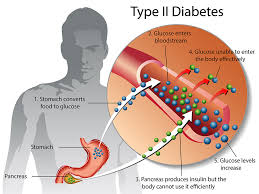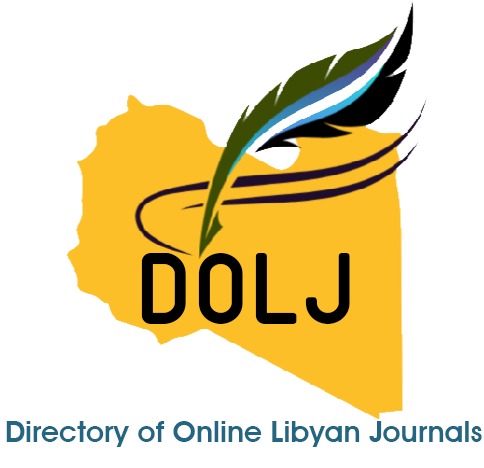Tracking the Burden of Type 2 Diabetes Mellitus Among Libyan Patients in Three Populated Districts of Tripoli, Libya
DOI:
https://doi.org/10.69667/rmj.25408Keywords:
Lipid Profile, Haematological Parameters, Type 2 Diabetes Mellitus, Dyslipidemia, Districts.Abstract
The rising global incidence of Type 2 Diabetes Mellitus (T2DM) is a major contributor to increased morbidity and mortality. Research consistently links type 2 diabetes mellitus (T2DM) with various hematological and lipid abnormalities. However, studies in Libya that examine the relationship between these factors in T2DM patients and correlate them with geographical distribution are scarce. This study aims to evaluate the variations in hematological and lipid profiles among Libyan individuals with type 2 diabetes mellitus (T2DM) and to investigate potential correlations between these parameters. Additionally, it seeks to conduct T2DM surveillance in densely populated regions. A cross-sectional study was conducted at laboratories located in three different districts of Tripoli: Ghout Al Shaal Specialized Hospital, Abu Salim Hospital, and Al Sarai Laboratory in Hay Al Andalus. A total of 261 Libyan participants were divided into 170 patients with type 2 diabetes and 91 non-diabetic (controls), aged 50-85 years. Anthropometric data (weight, height, and body mass index (BMI)) were measured using standard protocols. Complete blood count (CBC) and lipid profile analysis were measured using the Sysmex XP-300 automated hematology analyzer and the Roche Cobas Integra 400 Plus system, respectively. Data were analyzed statistically using GraphPad Prism and SPSS version 27. A p-value of <0.05 was considered statistically significant. -value of <0.05 was considered statistically significant. T2DM subjects exhibited a higher body mass index (BMI) across study groups, genders, and districts (p<0.001) and demonstrated a statistically significant increase in red blood cell (RBC) counts (p=0.018) when compared to controls. Gender analysis indicated that diabetic women had a slightly higher RBC count (p=0.02), while men showed elevated neutrophil percentages (p=0.046). District-specific analyses revealed distinct trends. In Abu Salim, both hemoglobin (Hb) concentrations and RBC counts were high (p=0.036 and p=0.012, respectively). In Hay Al Andalus, mean cell volume (MCV) was significantly lower, and white blood cell (WBC) counts were higher (p=0.031 and p=0.022, respectively). In Ghout Al Shaal, significantly higher neutrophil percentages (p<0.001) and lower lymphocyte percentages (p=0.005) were found among diabetics. Additionally, the diabetic group exhibited substantially high levels of HbA1c, fasting blood sugar (FBS), and triglycerides (TG) (p<0.001). While diabetic women aligned with these trends, the male subgroup displayed similar glycaemic levels but exhibited less pronounced lipid differences. Notably, lipid variances were only observed in Hay Al Andalus; diabetic participants had lower high-density lipoprotein cholesterol (HDL-C) and higher TG (p=0.02 and p=0.001, respectively). T2DM Libyan patients suffer from increased adiposity and poor glycemic control. Distinct lipid abnormalities were also observed among patients, but these are commonly seen in women. Patients in the Hay Al Andalus region had the most devastating dyslipidaemia compared to other districts. Moreover, the observed variations in blood indices may be attributed to chronic inflammation, disease severity, and potential hypoxia, influenced by gender and geographic factors. Our findings may offer valuable guidance for prevention and clinical management strategies for T2DM patients in Tripoli.

Downloads
Published
Issue
Section
How to Cite
Similar Articles
- Esam Alsaghair, Taher Alkesa, Wesam Elsaghayer, Validity of Selective Management in Trans pelvic Gunshot Wounds , Razi Medical Journal: Volume 1, Issue 2, 2025
- Basheer Alhadheeri, Comorbidities and Treatment Outcomes of Acute Appendicitis at a Tertiary Center in Libya , Razi Medical Journal: Volume 1, Issue 3, 2025
- Safaa Shehab, Hiba Awad, Shahrazad Khalaf, Zahraa Dawood, Sabaa Kareem, Fatima Salman, Blood-borne Viral Infections in Hemodialysis Units in Iraq: A Narrative Review of Prevalence and Contributing Factors , Razi Medical Journal: Volume 1, Issue 3, 2025
- Tarik Enaairi, Sundus Aldeebani, Hawa Abduljalil, Buschke-Fischer-Brauer Keratosis Punctata of the Palmar Creases in A 45-Year-Old Libyan Female: A Case Report , Razi Medical Journal: Volume 1, Issue 3, 2025
- Sara Fathi, Heba Hassan, Laila Alfageih, Prevalence of Carbapenem-Resistant Enterobacteriaceae Isolated from Clinical Samples in Medical Tobruk Center , Razi Medical Journal: Volume 1, Issue 3, 2025
- Mahmud Abushhewa, Mohamed Agilla, Ashraf Naass, Khadega Alazoumi, Abdulati Salem, Taj Al-Din Jaber, Mohammed Abdulqadir, Knowledge, Attitude, and Practices about Antibiotic Misuse among Libyan Community: A Cross-Sectional Survey , Razi Medical Journal: Volume 1, Issue 3, 2025
- Nawfal Hussein, Liwar Ahmed, Halder Abozait, Antimicrobial Resistance in Iraq: A Public Health Emergency in the Shadow of Conflict , Razi Medical Journal: Volume 1, Issue 3, 2025
- Ahmed Atia, Mohamed Elfagieh, Razi Medical Journal: Launching a New Journal and Call for Paper , Razi Medical Journal: Volume 1, Issue 1, 2025
You may also start an advanced similarity search for this article.








